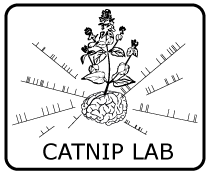Second type of criticality in the brain uncovers rich multiple-neuron dynamics (2019)
David Dahmen, Sonja Gruen, Markus Diesmann, Moritz Helias. Proceedings of the National Academy of Sciences (2019) (Proceedings of the National Academy of Sciences) (local cache)
Abstract
Cortical networks that have been found to operate close to a critical point exhibit joint activations of large numbers of neurons. However, in motor cortex of the awake macaque monkey, we observe very different dynamics: massively parallel recordings of 155 single-neuron spiking activities show weak fluctuations on the population level. This a priori suggests that motor cortex operates in a noncritical regime, which in models, has been found to be suboptimal for computational performance. However, here, we show the opposite: The large dispersion of correlations across neurons is the signature of a second critical regime. This regime exhibits a rich dynamical repertoire hidden from macroscopic brain signals but essential for high performance in such concepts as reservoir computing. An analytical link between the eigenvalue spectrum of the dynamics, the heterogeneity of connectivity, and the dispersion of correlations allows us to assess the closeness to the critical point.
